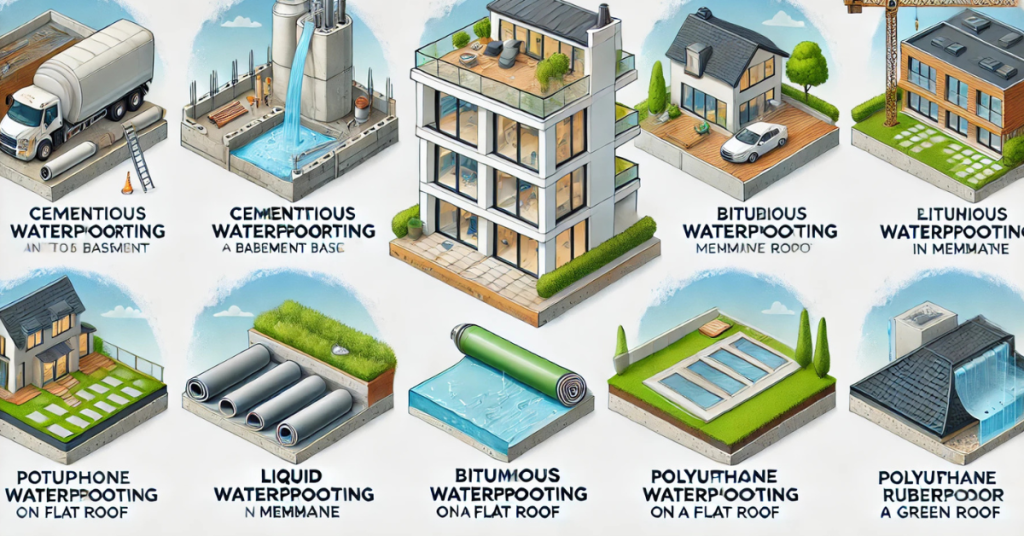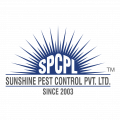
This includes waterproofing procedures mainly to prevent buildings, homes and other constructions from water damage, so that its strength and existence can be maintained through time. There are different applications of various applications and techniques of various applications of many special materials and techniques to create a barrier against waterproofing walls, ceilings, cellar, or foundations. In short, any structure lacks proper waterproofing promoting moisture infiltration, causing serious defects such as costs such as the formation of mold, weakening of the foundation and costs in monetary conditions for repair.
As a photo: You have the most beautiful house, and then cracks on the wall and peel Or, the shivering, disgusting domination from the basement-all these indications are that water damage is applied in the first place. Well, cement coatings, liquid membranes, bitumen coatings, polyurethane waterproofing, EPDM rubber membranes, as well as a specific surface and position they apply, such as they apply.
Waterproofing may be exposed to heavy rains, high humidity or continuous water, as swimming pools and water tanks. In addition, it enhances the safety of homes by providing a favorable environment to live, as waterproofing prevents mold and mildew problems that lead to breathing problems and allergies. On the other hand, waterproofing increases the value of the property, as home -free home -free home buyers create the best possibilities and require any repair over a very short to moderate to long periods.
Understanding Waterproofing
Waterproofing refers to the methods of construction and building maintenance that protect structures under water damage and moisture. It is defined as some specific coatings for the application of construction chemicals and some specific coatings for surfaces such as roofs, walls, basement and foundations, preventing water from going into and causing damage. In the absence of adequate waterproofing, buildings are susceptible to many complications, including mold growth, weakening of foundation, erosion of steel reinforcement, and cracking of structures. Such problems will not only lower the building, but will also include the cost of repair and health problems due to moisture.
Waterproofing treatment will vary from one structure to another according to the exposure status; These may include cemented coatings, liquid membranes, bituminous systems and polyuretha-based systems. Each of these treatment provides methods of different levels and intervention. Some types can provide increased flexibility and flexibility due to extreme weather. Thus, the good waterproofing of the building expands life, maintains the inner drought, and increases the resale value. Therefore, it is very important to invest in enough waterproofing solutions for long -term security and stability of any residential, commercial and industrial building
Types of Waterproofing Solutions
The construction of walls, roofs and all other surfaces was to be subjected to waterproofing to remove moisture and water damage. Ultimately, it can be said that there are many waterproofing procedures, but each is used according to its merit in relation to the above surface in the respective environment. However, there are five best ways for waterproofing and are currently being liked:
1. Cement-based waterproofing
Cement-based waterproofing mostly applied in bathrooms, basements, water tanks and swimming pools is one of the easiest methods. This includes making a thick, solid and resistant layer against water by mixing cement, sand and special waterproofing chemical additives. Cement waterproofing displays great durability and water pressure resistance; However, it lacks flexibility in cement waterproofing. Thus, it can open to crack over time if there is any structure movement.
2. Liquid waterproofing membrane
Once the liquid waterproofing membrane app produces a spontaneous, flexible and durable coat after drying. The application can occur by brush, roller or spray and is mainly for waterproofing roofs, balconies and foundations. It has good UV resistance and faces the climax of weather; Therefore, it is suitable for external use. The success of the liquid membrane is dependent on adequate surface preparation to secure adhesion and long -term performance.
3. Bituminous waterproofing (asphalt coating)
Bituminous waterproofing (asphalt coating) is widely used for commercial and residential construction, especially flat roofs, basement walls and bridges. The basis of this technique is a combination of heat-lagu bitumen (asphalt) with polymeric materials to create a viable and durable waterproofing barrier. It is quite durable and sticks well to solid surfaces. The negative side is that such coatings strongly oppose UV radiation; Therefore a protective mechanisms like tile or gravel should be provided outwards.
4. Polyurethane waterproofing
Polythane waterproofing is a high-performance approach to the production of a spontaneous, elastic and durable membrane. These membranes get applications, especially in areas under constant moisture such as roof roof, balconies and water tanks. This application confirms exceptional flexibility, crack resistance and long -term durability. However, working with polyurethane waterproofing is moisture-sensitive during application, making proper surface preparation and expert installation significantly for appropriate results.
Why is Waterproofing Important?
1.Definition of structural integrity and damage to damage
Water is usually regarded as a matrix that mostly threatens buildings as the impact of its action and proof often take time. What is most probably the structural elements, which will bear a certain load after some years, are doubly exposed to moisture. While concrete may seem a Herculean task, it possesses being porous by nature at the same time, providing water the opportunity to enter cracks, corrode steel reinforcement and slowly crack the foundation. Therefore, informal walls basically, and floor roof cracks, lower the lifetime of structures due to the different points of instability. Here, the installation of waterproofing would effectively deny water from ever coming into contact with its vital structural elements.
2. Molds, Mildeed, and Health Danger
Aside from fungi and mildew development, nothing provides an ideal condition within the building. Upon entry, the smell should be highly discernable, while it also leaves its ugly stains on walls. Mold can cause respiratory disorders, allergies, and many other harmful health issues, especially in persons suffering from asthma and compromised immune systems. Waterproofing stops the right conditions to develop moisture which can also go on to prevent the growth of molds, thus providing a healthy living and working environment.
3. Increases Property Value and Aesthetic Appeal
A moisture-free and well-maintained property will be too aesthetically pleasing for prospective buyers and investors. For example, waterproofing, carried out in order to maintain the aesthetics of any building, eliminates problems such as peeling paint, build-up of damp patches, and staining of walls and ceilings. Buyers favor homes and commercial property free from water damage and structurally strong; hence, waterproofing is an invested approach toward enhancing property value.
4. Saves Cost on Repair and Maintenance
Damages caused by water will finally call for costly repairs, such as restoring cracked walls, damaged flooring, corroded pipes, and weakened foundations. The neglect of waterproofing during construction or lack thereof sooner or later could lead to costly restoration work on existing buildings. However, installing waterproofing solutions means property owners will have set aside a fortune in such heroic spending, thereby extending the life of their buildings and minimizing maintenance costs in the future.
5. Protection of establishments with electricity from potential accidents
Water and electricity create a fatal combination for a person who maintains electrical installation. Water leakage in buildings can lead to electrical failures, and small circuits can also be taken with fire hazards. The moisture then penetrates into the walls and roof, through which electrical wires run, thus the possibility of damage to shocks and equipment increases. Proper waterproofing are safe and functioning to electrical systems, while ensuring protection from potential hazards that can harm people or cause great damage to property.


